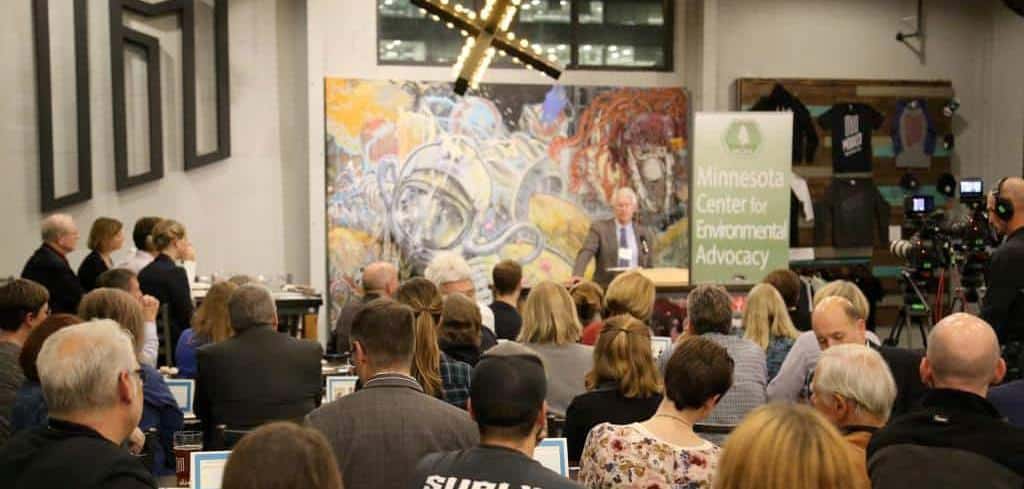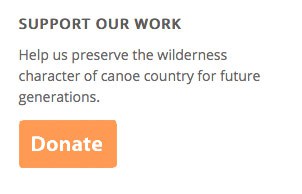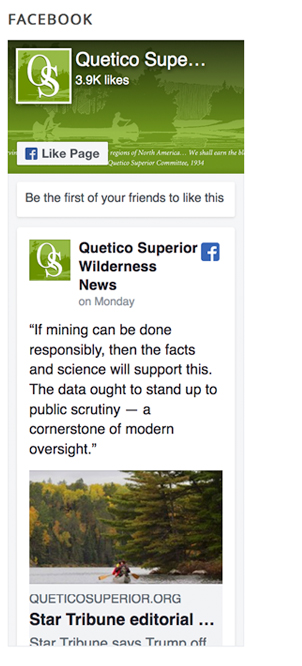
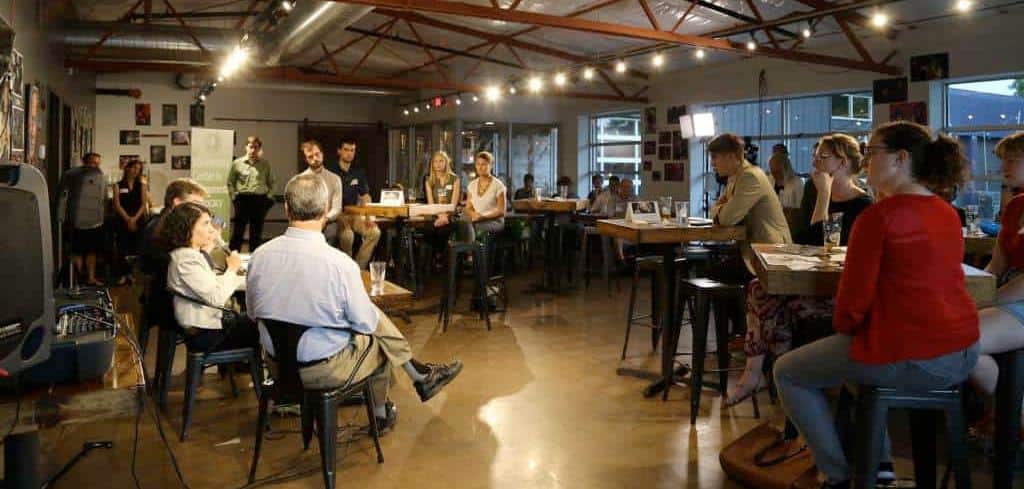
MCEA: Taking a stand for responsible mining
When it comes to the topic of mining in northern Minnesota, there’s often a familiar pattern to the discussion: people are for it or against it. And if they’re arguing for environmental protections, they’re probably against it. A PolyMet proposal to operate Minnesota’s first copper-nickel mine is certainly no exception, particularly given its proposed location in the Lake Superior watershed. Yet one organization, the Minnesota Center for Environmental Advocacy (MCEA), offers a different take on the debate.
“There’s a false dichotomy that you’re either pro-mining or anti-mining, and any regulation of mining is the equivalent of being anti-mining,” said Aaron Klemz, communications director at MCEA. “We’re anti-pollution, not anti-mining. We want to find ways to ensure that Minnesota’s water resources are protected.”
Setting a precedent
For 43 years, MCEA has relied on grants and the support of individual donors to provide a voice for the environment in Minnesota, focusing on a wide array of issues from mining and energy use to feed lots and pesticide application. In doing so, Klemz says that MCEA has sought to bring a voice to the table that is based on science and the law.
“We tend to be involved in things that are not obviously visible to the public. Our goal is to make sure that everything that happens in Minnesota is protective of the environment and of the air,” Klemz said. “We don’t tend to be the people organizing the marches.”
MCEA staff members are more likely to be found at places like the state capitol, where they ensure that legislators understand the impacts of proposed policies and are aware anti-environment attachments to unrelated bills. Their goal is to make sure that laws like the Minnesota Environmental Rights Act and the Minnesota Environmental Policy Act—which MCEA once helped to enact—are upheld.
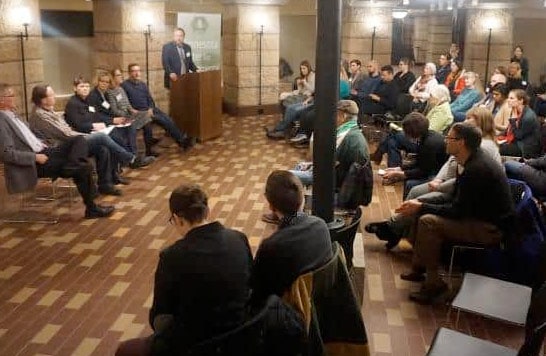
For the past 10 years, that work has included acting as a watchdog over the PolyMet proposal and its review by the Department of Natural Resources (DNR). According to Klemz and senior staff attorney Kevin Lee, this is a particularly important proposal. While Minnesota has a long history of ferrous, or iron, mining, PolyMet’s would be the first non-ferrous mine. As a result, it would be the first operation permitted under the state’s non-ferrous mining regulations, which were developed in the early 90s.
“This will be the first time the industry gets an indication of how our state plans to regulate a whole new industry,” Lee said. “We see PolyMet as the bellweather for future regulation. It will be setting the precedent for the next 50 to 100 years of environmental safeguards for mining in Minnesota.”
He also explained that because Minnesota’s non-ferrous regulations were written nearly three decades ago, they’ve fallen behind modern regulatory practices.
The evolution of mining regulation
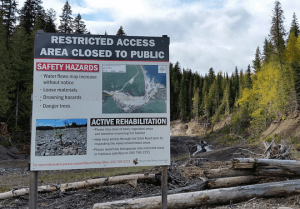
“One of the main lessons we’ve learned is how unprepared the state really is for this whole new industry,” Lee said, pointing first and foremost to the regulation of tailings dams, which are the materials left over after mining. Increasingly, regulatory practices are enacting stricter regulations and more careful monitoring. And many stakeholders want to see the mining industry move away from the use of water, open pits and dams to store those tailings at all.
These changes in regulation and attitude have come in direct response to global disasters, including a 2014 breech at the Mount Polley mine in British Columbia, Canada. According to the CBC, when the mine’s tailings dam broke, it released 24 million cubic meters of mining waste into the local watershed. An independent review attributed the disaster to failures in compliance and inadequate regulation.
That message didn’t go unheeded. According to Lee, “You see jurisdictions around the west and the world responding to [these types of] disasters.”
In Montana, for example, legislators responded to the Mount Polley report by passing a bill to implement several regulatory reforms. Independent mining engineers now review permit applications and can make changes to meet water quality standards and keep workers safe. Even the mining industry supported the changes.
“That bill was introduced by a Republican, and it had nearly unanimous support,” Lee said.
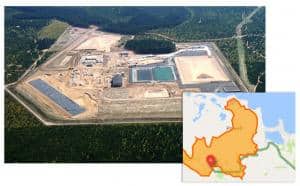
Both he and Klemz pointed out that Minnesota’s dam safety rules were designed for water. There are no separate regulations for dams that contain toxic waste, just as there are no requirements for independent review or public transparency. By contrast, some mines outside of Minnesota, such as Michigan’s Eagle Mine, actually provide monitoring data via public websites.
“We really need that kind of transparency so we can all feel comfortable with what’s happening on the ground,” Klemz said.
Acting as a watchdog
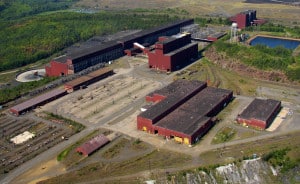
Of course, the PolyMet proposal can only be reviewed and permitted under current law. So while MCEA hopes to see the conversation around mine regulation evolve, it also continues to stay involved in the review process for PolyMet.
In June of this year, MCEA petitioned the DNR for a Supplemental Environmental Impact Statement because the scope of the PolyMet mine grew. According to Klemz, PolyMet now wants to mine four times faster than previous estimates. MCEA wants to ensure that any resulting environmental impacts are carefully considered. And the organization has also applied for a contested case hearing on the permit to mine, a proceeding during which an administrative judge would review the facts and the law as they relate to the case to make sure all parties are working off the same information.
At the same time, MCEA continues to act as an intermediary between the review process and the public. As Klemz explained, staying on top of the developments often involves reviewing long and complicated documents. MCEA plays a role in making sure the public understands the main takeaways and gets involved when necessary. He’s seen the way that public involvement has already helped ensure that PolyMet’s proposal is thoroughly reviewed.
“Members of the public have to recognize that they have agency. They get to have their say,” Klemz said. “They need to find the voices they trust, stay engaged and when they call for action or call for help, respond.”
That is perhaps what MCEA strives to do best: to become that trusted voice and bridge the gap between the science, the law, the public and the permitting process. To learn more about the organization’s work on the PolyMet proposal and other environmental issues throughout the state, visit http://www.mncenter.org.
By Alissa Johnson
